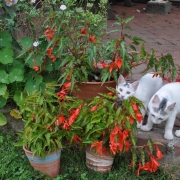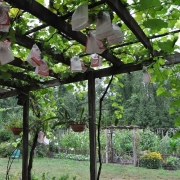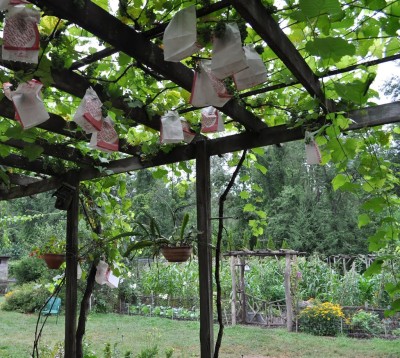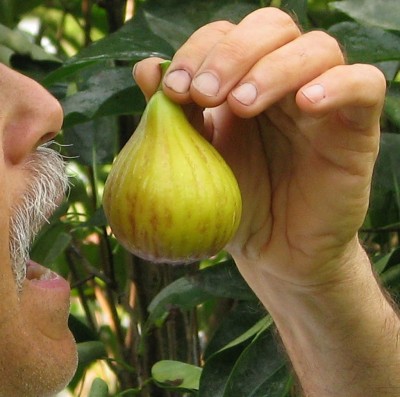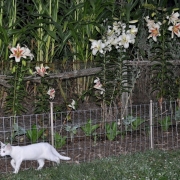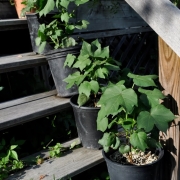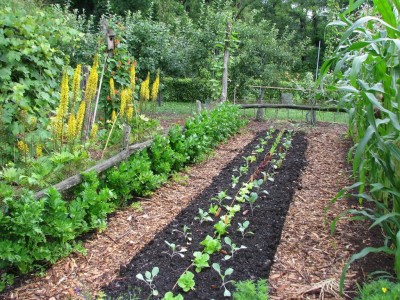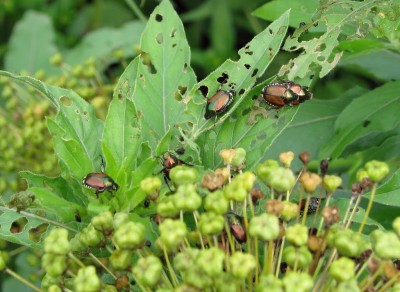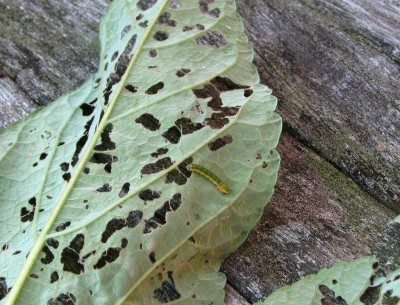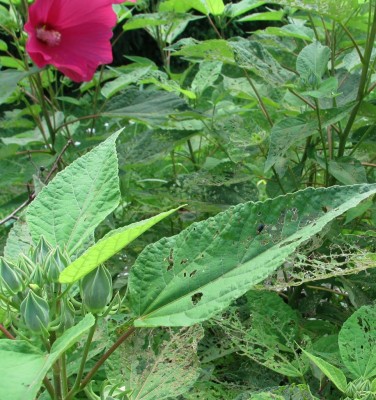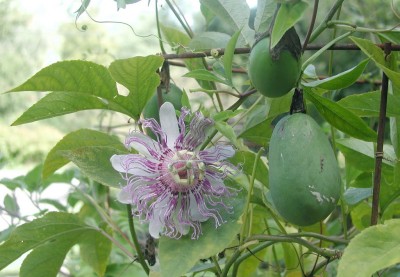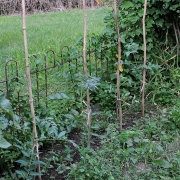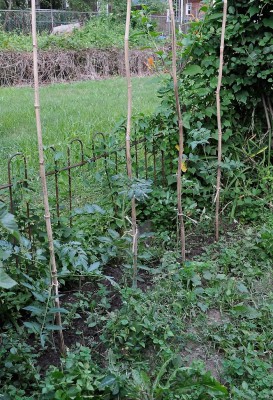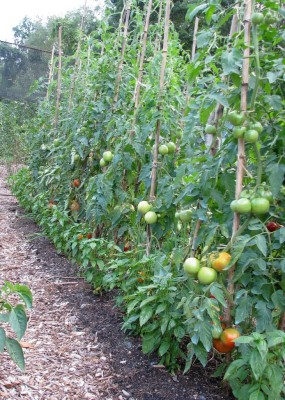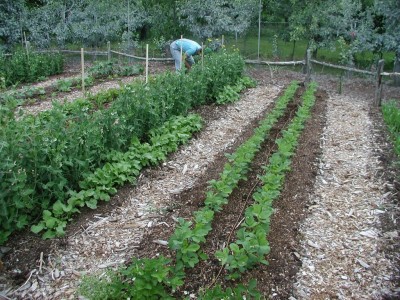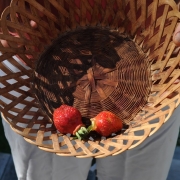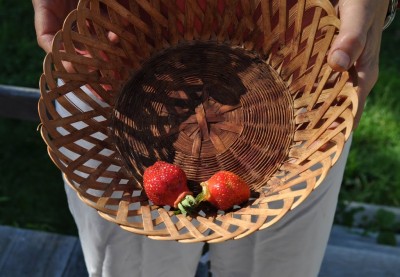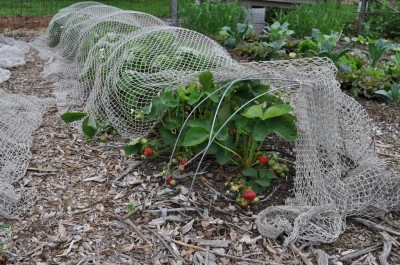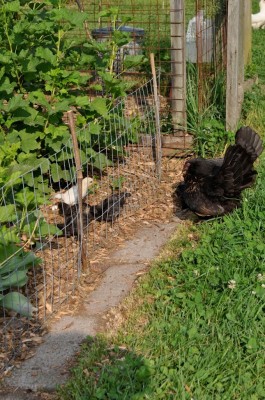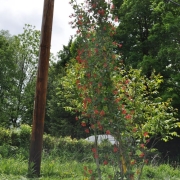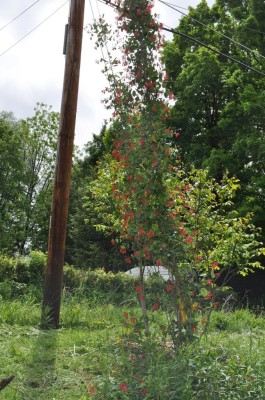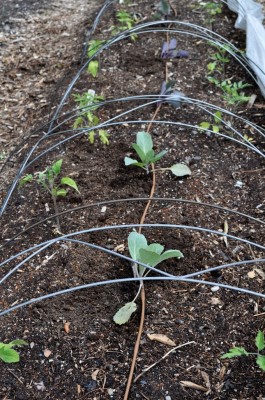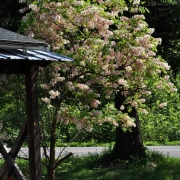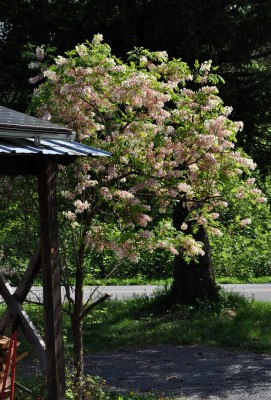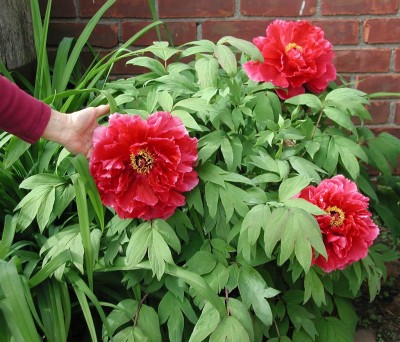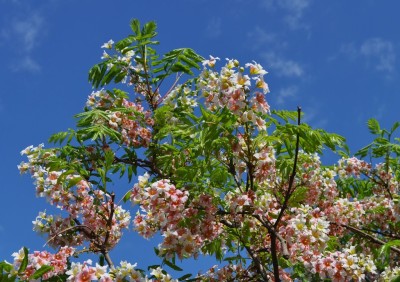[cabbageworms, begonia seedlings]
I hate to spray. That’s why last week I wrote that I’d rather snap the ends off ears of sweet corn infested with earworms rather than spray the corn to avert damage. That, despite the fact that the spray, Thuricide, isn’t poisonous to humans and most other creatures besides corn earworms and related insects. Today I had to spray, using this very material on a different plant.
Thuricide, one trade name for the bacterial insecticide Bacillus thurengiensis karstaki, or BTK, is specific against lepidopterous caterpillars. Lepidoptera is the order of insects that includes moths and butterflies (which these particular caterpillars become). Some lepidoptera, such as the swallowtails, are very beautiful. Other lepidoptera, such as those white moths that flit about cabbage, broccoli, kale, and related plants, are mundane.
Those innocent looking white moths are the culprits du jour, laying eggs on cabbage and its kin. The eggs hatch into velvety green caterpillars, known as imported cabbageworms, with voracious appetites for these same plants’ leaves. Although the insects’ camouflage is almost perfect, they can be spotted in various sizes if you look closely, especially on the undersides of leaves.
This morning I checked kale seedlings to find that they had been stripped to their main veins. This damage might spell death to them. Then again, it might not. Besides eating leaves of larger plants, the caterpillars also typically work their way in among broccoli buds. The insects turn pale green when cooked, making them look too prominent on that plate of cooked broccoli — yuk!
Because I dislike spraying, I hold off as long as possible before spraying Thuricide. Large plants can, anyway, tolerate a certain amount of damage. Not the seedlings, though. Perhaps this spray will hold the imported cabbageworms at bay for the rest of the season.
******************************************
Last fall I wrote of an exciting tuft of leaves sprouting in a flowerpot. The plantlets were the result of sowing dust-like seeds from some Mandalay Mandarin hybrid begonia plants. Excitement mounted this spring when the frail seedlings started to grow robustly and, then, when only a few weeks old, began to flower.
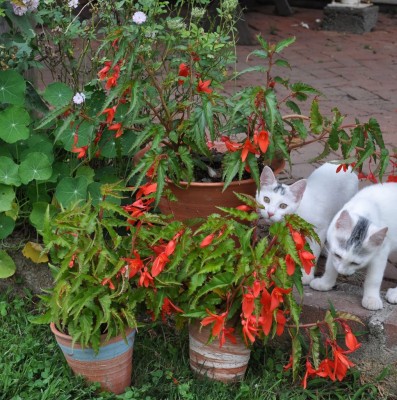
The seedlings have now grown up into sturdy plants that are smothered with flowers among the attractive, lance-shaped leaves having wavy edges. Like the parent, a plant that I highly recommend growing, the offspring have been flowering nonstop all summer, and keep up a neat appearance by cleanly shedding spent flowers. The resemblance of the children to the parent extends to the appearance of the flowers, which are red with a tinge of orange and dangle downward from the stems.
How odd all this resemblance! Mandalay Mandarin is a hybrid, the result of a breeder’s deliberately bringing together the pollen and egg cells from two carefully selected parents, perhaps a number of generations of carefully selected parents. When you sow seeds of any hybrid, be it a tomato, a begonia, or any other plant, the hybrid’s parents are, of course, different from the children’s parents, so the children should be different from their parent. My seedling begonias’ parent was Mandalay Mandarin; Mandalay Mandarin’s parent were — who knows what?
Carol Deppe, in her excellent book Breed Your own Vegetable Varieties, points out that a similarity between children of a hybrid and the hybrid could come about if the hybrid was not really a hybrid or if the parents of the hybrid were very, very similar.
At any rate, I now am growing, in addition to Mandalay Mandarin hybrid begonias, some other topnotch begonias that are genetically different from Mandalay Mandarin. The two siblings that made it alive through last fall and winter, now that I look at them, also look identical to each other. How odd, but beautiful.

